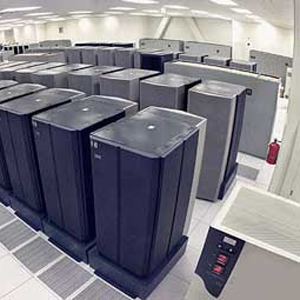 NEWS
NEWS
 NEWS
NEWS
 NEWS
NEWS
![]() As a security writer and futurist, when I hear someone from a cryptoanalysis outfit say the word “zettabyte” my ears do more than perk up, they triangulate and begin a careful spectrum analysis. So, when I was listening to NSA Whistleblower William Binney interviewed by Russia Today and these words cropped up I was soon paying attention.
As a security writer and futurist, when I hear someone from a cryptoanalysis outfit say the word “zettabyte” my ears do more than perk up, they triangulate and begin a careful spectrum analysis. So, when I was listening to NSA Whistleblower William Binney interviewed by Russia Today and these words cropped up I was soon paying attention.
Binney came to national attention earlier this year when he started telling the story of how NSA surveillance works to anyone who would listen. He is a crypto-mathematician and a codebreaker of the nth degree (described as one of the best in NSA history) and his explanation of the spying program appeared in the New York Times in August 2012. He spoke about “Stellar Wind” a top-secret domestic spying program developed by the NSA and its implications for civilian security and privacy.
After the entire Petraeus affair scandal, the NSA has come under a bit of a public relations miasma as it pertains to domestic spying and the privacy of US citizens and their digital dealings. It’s important that everyone is already aware that most anything sent over the Internet can be intercepted and anything send in the clear is largely unprotected; but the scale of surveillance of any individual citizen has always been something of a technical conundrum.
It’s unlikely that any one person (not already targeted) could have all their data ransacked by even an overfunded government agency because of the sheer volume but with the falling prices on big storage technology and the advent of Big Data fears of the NSA’s spying powers are less science fiction and more business fact. Massive storage of petabytes and the analytics necessary to process it are not uncommon discussion items here on SiliconANGLE.
“He is [President Obama] supporting the building of the Buffdale facility which is over over 2 million dollars they’re spending on storage alone of data,” says Binney when asked about how the current administration may have changed the NSA’s mission. “Which means they’re collecting a lot more now and they need more storage for it. That facility, by my calculations, that I submitted in a sworn affidavit to the court for the EFF lawsuit against the NSA would hold on the order of would hold on the order of 5,000 exabytes or 5 zettabytes of data…and that’s not talking about what they might have in the future.”
Binney is alleging a great deal of surveillance that extends to billions of communications.
Even now, with Anonymous rattling around like the rats in the walls of the Internet, the youth of many countries are turning to the use of anonymizing services and VPN services to hide their cyber-activities from prying eyes. Although for the most part this cultural shift is due to ISPs throttling and essentially spying on their own customers as part of anti-copying regimes—we’ve seen the sudden up-thrust of more VPN use after the UK blocked The Pirate Bay, but using more security to hide communication would also tend to help shield against government surveillance to an extent as well.
Not long after the Petraeus scandal hit the airwaves, it sparked a debate about domestic government spying and much of the media circled back to Google’s most recent semiannual Transparency Report. In that, Google revealed that they’d received over 20,000 requests from governments around the world and complied with almost 90% of them. This doesn’t even cover covert surveillance of the type that Binney speaks about in his interview.
Much of this behavior, and the radical transparency of Internet communications may lead to a paradigm shift among the wired-and-wise to migrate to more secure communication, use more cryptography in their daily communications, and watch what they say online. Of course, the opposite is also true: as the Internet integrates more fully into our daily lives, it’s easy to be more cavalier about what we say online, what information we boast across the wires, and recklessly abandon in dusty 3rd party storage silos.
Of course, a person targeted for surveillance by a large agency wouldn’t be able to hide their activity even if they encrypted everything online—spies capably sussed out communications long before the arrival of the Internet.
Binney believes that he’s definitely a “target” and takes a bit of humor in his being in the NSA’s spotlight:
“So I keep telling them everything I think of them in my e-mail, so when they read it they know everything I think of them,” he says.
THANK YOU